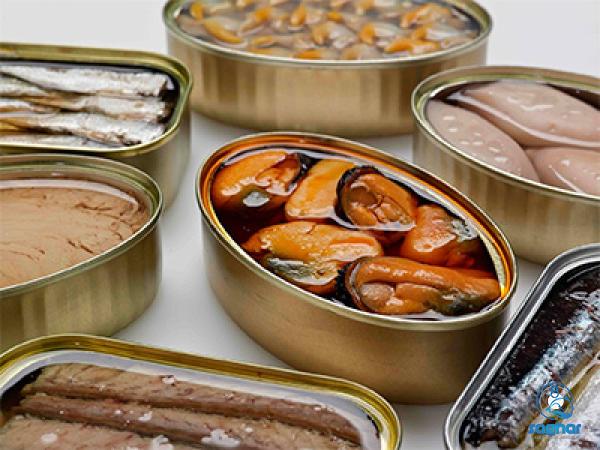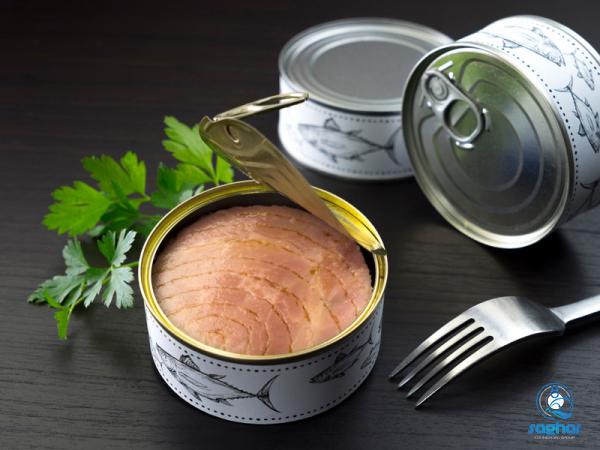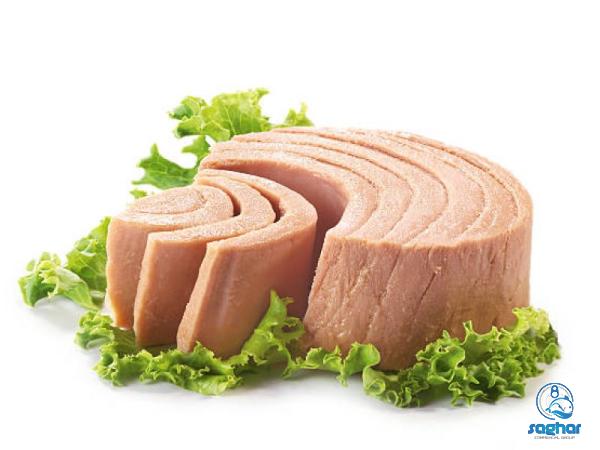Canned tuna is a popular food product that has gained significant traction in the global market. It is a convenient, affordable, and versatile protein source that can be easily incorporated into various dishes. Canned tuna is produced by raw fish being cleaned, cooked, and then packaged in an airtight container to maintain its freshness and taste. One of the main advantages of canned tuna is its long shelf life, which makes it an ideal choice for consumers looking for a convenient and non-perishable protein option. Canning preserves the fish and extends its shelf life for months or even years, allowing consumers to have a readily available protein source in their pantry. There are several types of tuna varieties that are commonly used for canning, including skipjack, albacore, yellowfin, and bigeye tuna. Skipjack tuna is the most commonly used because of its abundance and affordability. Albacore tuna, also known as white tuna, is known for its mild flavor and is considered to be of higher quality. Yellowfin and bigeye tuna are also used, but they tend to be slightly more expensive.
canned food
 The tuna used for canning is typically harvested through commercial fishing methods such as longlining and purse seining. These methods ensure that large quantities of fish can be harvested efficiently to meet the demand for canned tuna. However, there has been increasing concern about the sustainability of tuna fishing due to overfishing and bycatch issues, prompting some consumers to seek out sustainably sourced canned tuna. Canned tuna comes in various forms, including solid, chunk, and flaked. Solid tuna is made from whole pieces of fish, providing a firmer texture. Chunk tuna is made from smaller pieces of fish, while flaked tuna is made up of smaller, shredded pieces. The choice of form often comes down to personal preference and how the tuna will be used in recipes. In terms of nutritional value, canned tuna is a good source of high-quality protein, omega-3 fatty acids, vitamins, and minerals. It is low in calories and fat, making it a healthy option for those looking to maintain a balanced diet. Tuna is also known for its high levels of selenium, a mineral that plays a critical role in the body’s antioxidant defense system. The versatility of canned tuna is one of its key selling points. It can be used in a variety of dishes such as salads, sandwiches, pasta, casseroles, and sushi. Tuna salad, a mixture of canned tuna, mayonnaise, and various other ingredients, is a classic dish that is widely enjoyed. The mild flavor of canned tuna allows it to be easily paired with other ingredients and flavors, making it a versatile ingredient in many recipes.
The tuna used for canning is typically harvested through commercial fishing methods such as longlining and purse seining. These methods ensure that large quantities of fish can be harvested efficiently to meet the demand for canned tuna. However, there has been increasing concern about the sustainability of tuna fishing due to overfishing and bycatch issues, prompting some consumers to seek out sustainably sourced canned tuna. Canned tuna comes in various forms, including solid, chunk, and flaked. Solid tuna is made from whole pieces of fish, providing a firmer texture. Chunk tuna is made from smaller pieces of fish, while flaked tuna is made up of smaller, shredded pieces. The choice of form often comes down to personal preference and how the tuna will be used in recipes. In terms of nutritional value, canned tuna is a good source of high-quality protein, omega-3 fatty acids, vitamins, and minerals. It is low in calories and fat, making it a healthy option for those looking to maintain a balanced diet. Tuna is also known for its high levels of selenium, a mineral that plays a critical role in the body’s antioxidant defense system. The versatility of canned tuna is one of its key selling points. It can be used in a variety of dishes such as salads, sandwiches, pasta, casseroles, and sushi. Tuna salad, a mixture of canned tuna, mayonnaise, and various other ingredients, is a classic dish that is widely enjoyed. The mild flavor of canned tuna allows it to be easily paired with other ingredients and flavors, making it a versatile ingredient in many recipes.
Specifications of canned food
 Canned tuna is also a popular choice for outdoor activities such as picnics, camping, and hiking, as it does not require refrigeration and can be easily packed and carried. This makes it a convenient food option for individuals who are on the go or do not have access to cooking facilities. In recent years, the canned tuna industry has faced some challenges, particularly related to sustainability and ethical factors. Overfishing has depleted some tuna stocks, leading to concerns about the long-term viability of the industry. Bycatch, the capture of non-target species, including endangered marine animals, is another issue associated with tuna fishing practices. As a result, some canned tuna brands have taken steps to improve their sustainability practices, such as partnering with organizations like the Marine Stewardship Council (MSC) or adopting more selective fishing methods. In conclusion, canned tuna is a widely consumed food product that offers convenience, versatility, and nutritional benefits. It is a popular protein source and can be incorporated into various dishes. However, due to concerns about sustainability and ethical practices, consumers are encouraged to choose brands that prioritize responsible fishing methods.Title: The Canned Tuna Industry: Opportunities and Challenges Introduction: The canned tuna industry has experienced significant growth and popularity over the years due to its convenience, versatility, and nutritional benefits. However, like any other industry, it faces numerous opportunities and challenges that shape its future. In this article, we will explore key aspects of the canned tuna industry, including market trends, competition, sustainability, and innovations. 1. Market Overview: The global canned tuna market has witnessed steady growth, driven by factors such as increasing consumer demand for convenient and healthy protein sources. Rising awareness about the nutritional benefits of tuna, including its high protein content, Omega-3 fatty acids, and vitamins, has contributed to its popularity. Furthermore, the growth of the canned food industry as a whole, and the increasing preference for shelf-stable products, have also fueled the demand for canned tuna. 2. Competitive Landscape: The canned tuna industry is highly competitive, with several players vying for market share. Major companies in the industry include Thai Union Group, Starkist, Bumble Bee Foods, Inc., and Tri Marine International. These companies invest heavily in brand building, product development, and marketing to retain existing customers and attract new ones. With increasing consumer awareness and demand for sustainably sourced tuna, companies that demonstrate strong ethical practices and environmentally friendly fishing methods have gained a competitive edge.
Canned tuna is also a popular choice for outdoor activities such as picnics, camping, and hiking, as it does not require refrigeration and can be easily packed and carried. This makes it a convenient food option for individuals who are on the go or do not have access to cooking facilities. In recent years, the canned tuna industry has faced some challenges, particularly related to sustainability and ethical factors. Overfishing has depleted some tuna stocks, leading to concerns about the long-term viability of the industry. Bycatch, the capture of non-target species, including endangered marine animals, is another issue associated with tuna fishing practices. As a result, some canned tuna brands have taken steps to improve their sustainability practices, such as partnering with organizations like the Marine Stewardship Council (MSC) or adopting more selective fishing methods. In conclusion, canned tuna is a widely consumed food product that offers convenience, versatility, and nutritional benefits. It is a popular protein source and can be incorporated into various dishes. However, due to concerns about sustainability and ethical practices, consumers are encouraged to choose brands that prioritize responsible fishing methods.Title: The Canned Tuna Industry: Opportunities and Challenges Introduction: The canned tuna industry has experienced significant growth and popularity over the years due to its convenience, versatility, and nutritional benefits. However, like any other industry, it faces numerous opportunities and challenges that shape its future. In this article, we will explore key aspects of the canned tuna industry, including market trends, competition, sustainability, and innovations. 1. Market Overview: The global canned tuna market has witnessed steady growth, driven by factors such as increasing consumer demand for convenient and healthy protein sources. Rising awareness about the nutritional benefits of tuna, including its high protein content, Omega-3 fatty acids, and vitamins, has contributed to its popularity. Furthermore, the growth of the canned food industry as a whole, and the increasing preference for shelf-stable products, have also fueled the demand for canned tuna. 2. Competitive Landscape: The canned tuna industry is highly competitive, with several players vying for market share. Major companies in the industry include Thai Union Group, Starkist, Bumble Bee Foods, Inc., and Tri Marine International. These companies invest heavily in brand building, product development, and marketing to retain existing customers and attract new ones. With increasing consumer awareness and demand for sustainably sourced tuna, companies that demonstrate strong ethical practices and environmentally friendly fishing methods have gained a competitive edge.
buy canned food
 3. Sustainability Concerns: Sustainability has become a critical issue in the tuna industry due to concerns about overfishing and bycatch. Overfishing has led to depletion of certain tuna species and has raised questions about the industry’s long-term viability. Bycatch, which often includes endangered marine species, is another significant concern. As a result, consumers are becoming more conscious about the origin of their canned tuna and are increasingly seeking brands that prioritize sustainable and responsible fishing practices. 4. Ethical Fishing Practices: To address sustainability concerns, many companies in the canned tuna industry have taken steps to improve their fishing practices. This includes implementing selective fishing methods, partnering with organizations like the Marine Stewardship Council (MSC), and supporting initiatives such as sustainable fishery certifications. By adopting these practices, companies can not only attract eco-conscious consumers but also ensure the long-term availability of tuna resources. 5. Consumer Preferences: The preferences of consumers continue to evolve, and canned tuna companies must adapt to meet changing demands. Consumers are increasingly seeking new flavors and varieties in canned tuna products, such as those infused with different spices, sauces, or herbs. Additionally, there is a growing demand for value-added tuna products, such as ready-to-eat meals or gourmet options, which provide convenience and appeal to more discerning consumers. 6. Health and Wellness Trends: The health and wellness trend has influenced consumer choices, including their preference for canned tuna. As consumers become more health-conscious, they seek out products that align with their dietary needs and preferences. The low-calorie, high-protein nature of canned tuna makes it an attractive option for those looking to maintain a balanced diet. Companies that focus on promoting the health benefits of canned tuna and aligning their products with specific dietary requirements are likely to enjoy a competitive advantage. 7. Innovations in Packaging: Packaging plays a crucial role in the canned tuna industry. Companies are increasingly investing in innovative packaging solutions to enhance product shelf life, maintain freshness, and improve convenience for consumers. The use of easy-open can lids, resealable containers, and pouch packaging are examples of packaging innovations that have gained popularity in recent years. Such advancements not only improve the overall customer experience but also contribute to reducing food waste. 8. E-commerce and Direct-to-Consumer: The rise of e-commerce has opened up new opportunities for the canned tuna industry. With the convenience and widespread accessibility of online shopping, more consumers are opting to purchase groceries, including canned tuna, through digital channels. Additionally, the direct-to-consumer model allows companies to establish closer relationships with customers, collect valuable data, and offer personalized product recommendations. Embracing e-commerce and direct-to-consumer strategies can help companies reach new markets and improve profitability. 9. Emerging Markets: While the canned tuna industry is well-established in many developed countries, there are still untapped opportunities in emerging markets. As disposable incomes rise and consumer awareness of the nutritional benefits of tuna grows, countries in Asia, particularly China and India, present significant growth potential. However, companies must navigate cultural differences, adapt their products to local tastes, and address logistical challenges to succeed in these markets. 10. Food Safety and Quality Assurance: Food safety and quality assurance are paramount in the canned tuna industry. To ensure product safety and consumer confidence, companies must adhere to rigorous quality standards, implement robust quality control systems, and maintain strict hygiene practices throughout the production process. Establishing strong relationships with suppliers and conducting regular audits are essential for maintaining high-quality standards.
3. Sustainability Concerns: Sustainability has become a critical issue in the tuna industry due to concerns about overfishing and bycatch. Overfishing has led to depletion of certain tuna species and has raised questions about the industry’s long-term viability. Bycatch, which often includes endangered marine species, is another significant concern. As a result, consumers are becoming more conscious about the origin of their canned tuna and are increasingly seeking brands that prioritize sustainable and responsible fishing practices. 4. Ethical Fishing Practices: To address sustainability concerns, many companies in the canned tuna industry have taken steps to improve their fishing practices. This includes implementing selective fishing methods, partnering with organizations like the Marine Stewardship Council (MSC), and supporting initiatives such as sustainable fishery certifications. By adopting these practices, companies can not only attract eco-conscious consumers but also ensure the long-term availability of tuna resources. 5. Consumer Preferences: The preferences of consumers continue to evolve, and canned tuna companies must adapt to meet changing demands. Consumers are increasingly seeking new flavors and varieties in canned tuna products, such as those infused with different spices, sauces, or herbs. Additionally, there is a growing demand for value-added tuna products, such as ready-to-eat meals or gourmet options, which provide convenience and appeal to more discerning consumers. 6. Health and Wellness Trends: The health and wellness trend has influenced consumer choices, including their preference for canned tuna. As consumers become more health-conscious, they seek out products that align with their dietary needs and preferences. The low-calorie, high-protein nature of canned tuna makes it an attractive option for those looking to maintain a balanced diet. Companies that focus on promoting the health benefits of canned tuna and aligning their products with specific dietary requirements are likely to enjoy a competitive advantage. 7. Innovations in Packaging: Packaging plays a crucial role in the canned tuna industry. Companies are increasingly investing in innovative packaging solutions to enhance product shelf life, maintain freshness, and improve convenience for consumers. The use of easy-open can lids, resealable containers, and pouch packaging are examples of packaging innovations that have gained popularity in recent years. Such advancements not only improve the overall customer experience but also contribute to reducing food waste. 8. E-commerce and Direct-to-Consumer: The rise of e-commerce has opened up new opportunities for the canned tuna industry. With the convenience and widespread accessibility of online shopping, more consumers are opting to purchase groceries, including canned tuna, through digital channels. Additionally, the direct-to-consumer model allows companies to establish closer relationships with customers, collect valuable data, and offer personalized product recommendations. Embracing e-commerce and direct-to-consumer strategies can help companies reach new markets and improve profitability. 9. Emerging Markets: While the canned tuna industry is well-established in many developed countries, there are still untapped opportunities in emerging markets. As disposable incomes rise and consumer awareness of the nutritional benefits of tuna grows, countries in Asia, particularly China and India, present significant growth potential. However, companies must navigate cultural differences, adapt their products to local tastes, and address logistical challenges to succeed in these markets. 10. Food Safety and Quality Assurance: Food safety and quality assurance are paramount in the canned tuna industry. To ensure product safety and consumer confidence, companies must adhere to rigorous quality standards, implement robust quality control systems, and maintain strict hygiene practices throughout the production process. Establishing strong relationships with suppliers and conducting regular audits are essential for maintaining high-quality standards.
canned food + buy and sell
 Conclusion: The canned tuna industry continues to thrive due to its convenience, nutritional benefits, and versatility. However, challenges related to sustainability, competition, and changing consumer preferences require companies in the industry to adapt and innovate. By prioritizing ethical fishing practices, investing in sustainable initiatives, and catering to evolving consumer demands, canned tuna manufacturers can seize opportunities and secure their position in this dynamic market.
Conclusion: The canned tuna industry continues to thrive due to its convenience, nutritional benefits, and versatility. However, challenges related to sustainability, competition, and changing consumer preferences require companies in the industry to adapt and innovate. By prioritizing ethical fishing practices, investing in sustainable initiatives, and catering to evolving consumer demands, canned tuna manufacturers can seize opportunities and secure their position in this dynamic market.

Your comment submitted.